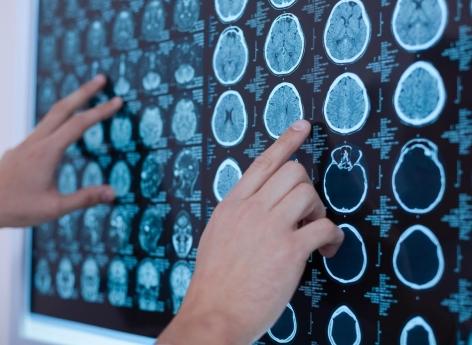primary
- In France, 160,000 people have Parkinson’s disease, according to the National Institute of Health and Medical Research (Inserm).
- There are 25,000 new diagnoses of this disease each year in France.
Dopaminergic neurons are those destroyed by Parkinson’s disease. But according to a study published in the journal Nature CommunicationsThe protein could make it possible to protect the progression of this disease.
Early detection of Parkinson’s disease
Parkinson’s disease is the second most common degenerative disease in France after Alzheimer’s disease. It is characterized by three main motor symptoms, which make it possible to establish the diagnosis. First of all, akinesia, when the individual feels slow in carrying out and coordinating his movements. Then hypertonia, which is an abnormal stiffness of the muscles. And finally, the tremors that mainly concern the hands and arms. So far, treatments have slowed the progression of the disease, but none have cured it. Therefore, screening as soon as possible is very important because it allows early treatment to start.
Fer2 gene causes defects in mitochondria
A team of researchers wanted to understand how dopaminergic neurons are affected by Parkinson’s disease. For this, they conducted their experiments on flies.
In previous studies, they have already shown that a mutation in the Fer2 gene can cause symptoms specific to Parkinson’s disease in flies. In particular, they note a deficiency of mitochondria. These are organelles found in cells and are sources of energy and cellular respiration, so they are very important for the health of neurons.
More iron 2 protects against oxidative stress
For their new study, they wondered whether an increase in the amount of Fer2 — without the mutation — in cells could have a protective effect. Thus, they put flies in a situation that causes oxidative stress on dopaminergic neurons. Oxidative stress can be defined as an attack on cells Ocean Reactive oxygen species (ROS), as shown Futura Science. Normally, ROS are destroyed by antioxidant molecules, but their production is damaged in case of oxidative stress, so ROS can easily damage our neurons. Ultimately, oxidative stress can, in part, cause neurons to die.
We hope for a new treatment
According to the results obtained by the researchers, too large amounts of iron 2 will cancel the action of oxidative stress, and therefore it does not have any negative effect on animals. “This key gene appears to play a critical role against degeneration of dopaminergic neurons in flies by controlling not only mitochondrial structure but also its functions.”Federico Miozzo, one of the authors, explains.
In the future, researchers will continue their experiments with mice, which are mammals that are closer to humans than flies. If the results are similar to those observed in flying insects, this could mean that Fer2 could be adapted as a treatment…maybe one day in humans.

“Subtly charming problem solver. Extreme tv enthusiast. Web scholar. Evil beer expert. Music nerd. Food junkie.”

